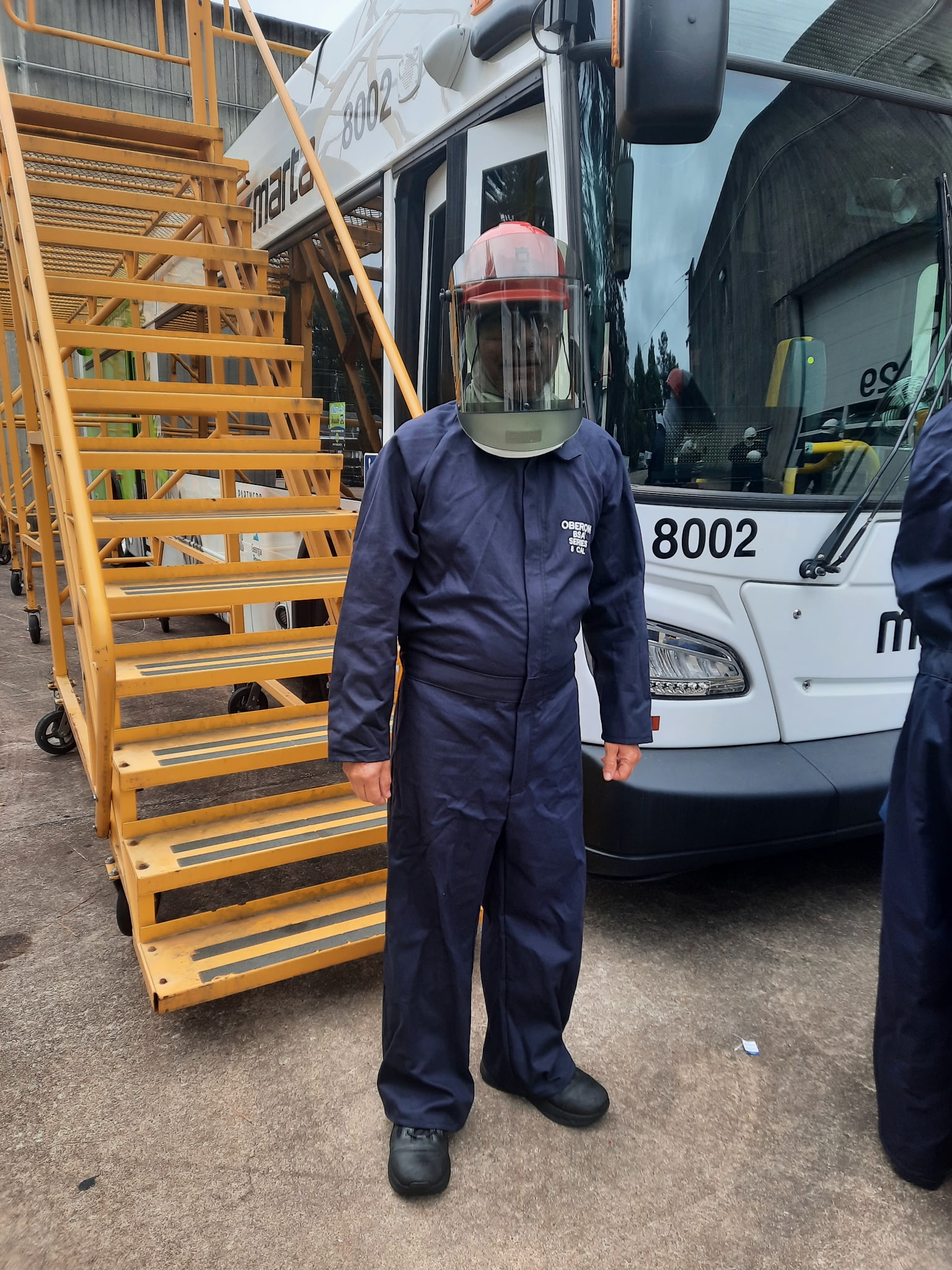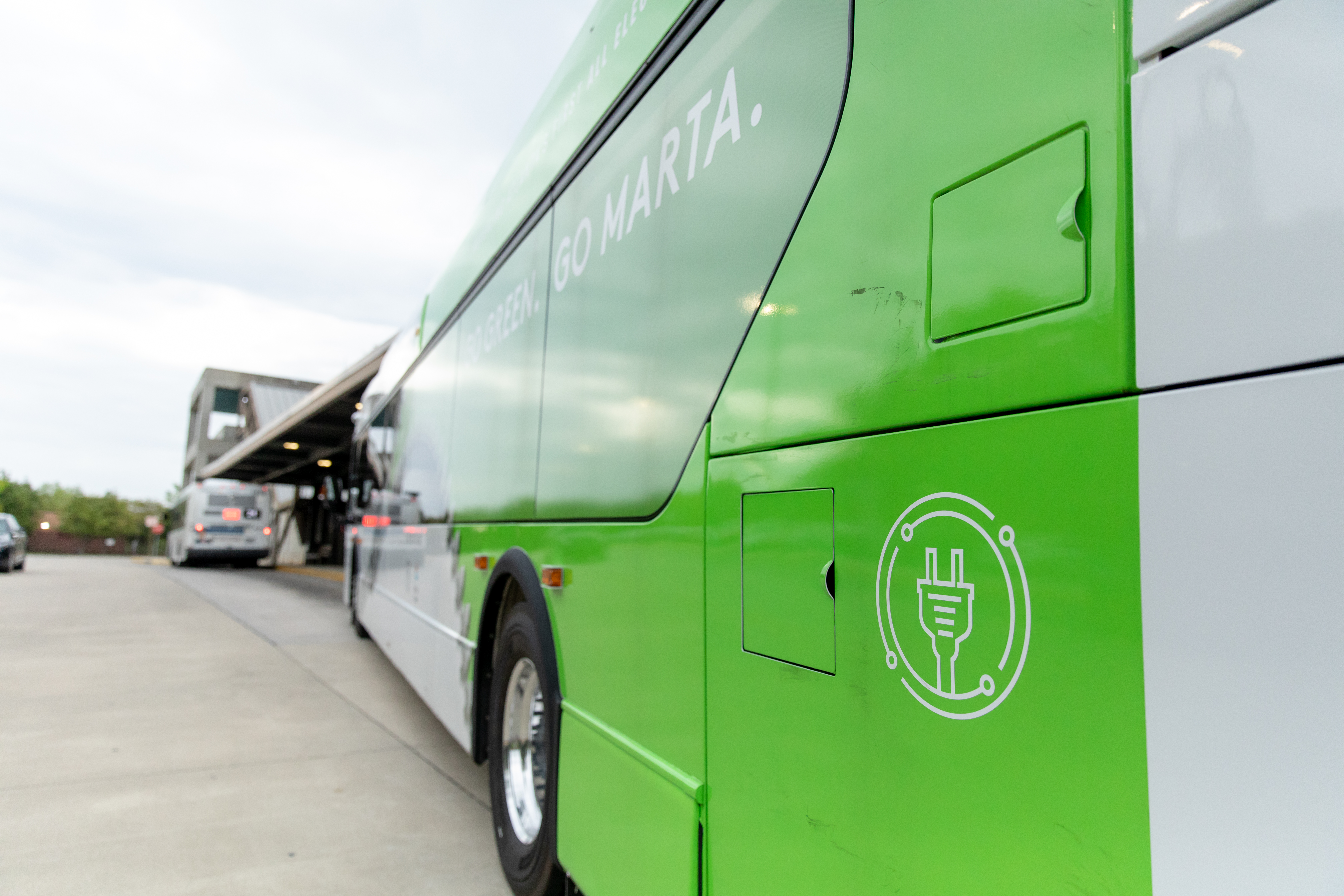Behind the Ride: Rolling Toward the Future on MARTA’s Electric Buses
 The Laredo Bus Facility is home to a new fleet of zero-emission electric buses that are already transforming the daily commute for MARTA customers. These electric buses run with zero tailpipe emissions, making them a breath of fresh air for the metro Atlanta region, while offering a cleaner, quieter, and smoother ride for bus customers.
The Laredo Bus Facility is home to a new fleet of zero-emission electric buses that are already transforming the daily commute for MARTA customers. These electric buses run with zero tailpipe emissions, making them a breath of fresh air for the metro Atlanta region, while offering a cleaner, quieter, and smoother ride for bus customers.
And Laredo is also the workplace of the two people who know more about the new electric buses than anyone at MARTA: maintenance techs Eliades “Eli” Torres and Jovolonie “Tye” Fungechung.
“They’re quiet, they’re smooth, and they’re way easier to drive,” Eli said of the buses he and Tye work together to maintain.
Eli has been with MARTA for 18 years, having moved to Atlanta from Miami. Tye is a former a dealership technician who joined the team five years ago for a chance to grow and do meaningful work. When the call came for volunteers to work on MARTA’s new electric buses, they stepped up without hesitation.
“I’ve always been interested in electronics,” said Tye. “And everything is electronic on these buses.”
High Voltage Work Comes with High Safety Standards
 Eli and Tye work with powerful battery systems, advanced cooling pumps, and regenerative braking components that charge the bus as it slows down.
Eli and Tye work with powerful battery systems, advanced cooling pumps, and regenerative braking components that charge the bus as it slows down.
As is the case with everything at MARTA, employee safety at Laredo is paramount. Before they ever laid a hand on the vehicles, Eli and Tye completed a two-week training course with New Flyer, the bus manufacturer. They learned how to work safely with high-voltage systems, all while wearing full protective suits and face shields that can get quite toasty in the summer.
They are required to work in pairs on the vehicles and are not allowed to wear anything metallic. That means no zippers, no jewelry, and no nylon clothing.
The buses are surrounded by barriers during maintenance, and two separate keys must be used to ensure the bus can’t be powered on accidentally. A fiberglass “safety hook” stands by in case of emergencies.
The job requires Eli and Tye to be 100-percent focused on their own safety, which both take very seriously.
Built for the Long Haul
To properly maintain the EV buses, Tye and Eli regularly grease joints, check the tires, and monitor the health of the batteries. Their work has paid off, with the electric bus fleet haven proven to be reliable so far.
“We haven’t had to replace a single battery yet,” said Tye.
The batteries, grouped into strings and mostly housed on the roof and in the rear, take about six hours to charge from 25 percent to nearly full capacity. Once charged, a bus can handle a full day’s route..jpg)
A bus operator rolling out from the Laredo garage to serve Route 2, for example, can leave before sunrise and return around 4 p.m. And unlike traditional buses, electric buses do not require gasoline or other liquids that might leak out into the environment.
“The buses are less hazardous for the environment,” said Eli. “There’s no engine oil, no transmission fluid—just coolant.”
A Cleaner Ride for Everyone
MARTA’s move toward electric buses is part of a bigger mission to create a 100% zero-emissions fleet by 2050.
This goal is also a promise to future generations. Public transit already helps reduce traffic and emissions, cutting about 37 million metric tons of carbon each year. But MARTA is taking it a step further by investing in electric and exploring hydrogen fuel technology, too.
 The journey began in the ‘90s with the compressed natural gas (CNG) buses launched before the 1996 Atlanta Olympics. Now, nearly 70 percent of MARTA’s buses run on CNG. With electric buses next in line, the evolution continues.
The journey began in the ‘90s with the compressed natural gas (CNG) buses launched before the 1996 Atlanta Olympics. Now, nearly 70 percent of MARTA’s buses run on CNG. With electric buses next in line, the evolution continues.
“Our goal is to adopt state-of-the-art technology to deliver cleaner, quieter, and more efficient transit options,” said Peter Bruno, MARTA’s Senior Director of Operations Planning & Controls.
MARTA isn’t doing this alone. Federal funding, support from utility companies, and collaboration with transit and energy organizations are fueling the progress.
Even charging schedules are carefully planned to take advantage of off-peak electricity rates to save money while reducing strain on the grid.
The Road Ahead
Six 40-foot electric buses have been rolling on metro Atlanta’s streets for two years, and soon, longer 60-foot articulated electric buses will run along MARTA Rapid Bus Rapid Transit (BRT) routes.
As more buses join the fleet and more passengers hop on board, it’s clear the future of MARTA’s bus service, and public transportation in general, will be electric.